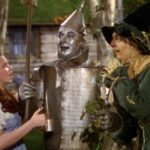 Technology
Technology  Technology
Technology  Humans
Humans 10 Everyday Human Behaviors That Are Actually Survival Instincts
 Animals
Animals 10 Animals That Humiliated and Harmed Historical Leaders
 History
History 10 Most Influential Protests in Modern History
 Creepy
Creepy 10 More Representations of Death from Myth, Legend, and Folktale
 Technology
Technology 10 Scientific Breakthroughs of 2025 That’ll Change Everything
 Our World
Our World 10 Ways Icelandic Culture Makes Other Countries Look Boring
 Misconceptions
Misconceptions 10 Common Misconceptions About the Victorian Era
 Mysteries
Mysteries 10 Strange Unexplained Mysteries of 2025
 Miscellaneous
Miscellaneous 10 of History’s Most Bell-Ringing Finishing Moves
 Technology
Technology Top 10 Everyday Tech Buzzwords That Hide a Darker Past
 Humans
Humans 10 Everyday Human Behaviors That Are Actually Survival Instincts
 Animals
Animals 10 Animals That Humiliated and Harmed Historical Leaders
Who's Behind Listverse?

Jamie Frater
Head Editor
Jamie founded Listverse due to an insatiable desire to share fascinating, obscure, and bizarre facts. He has been a guest speaker on numerous national radio and television stations and is a five time published author.
More About Us History
History 10 Most Influential Protests in Modern History
 Creepy
Creepy 10 More Representations of Death from Myth, Legend, and Folktale
 Technology
Technology 10 Scientific Breakthroughs of 2025 That’ll Change Everything
 Our World
Our World 10 Ways Icelandic Culture Makes Other Countries Look Boring
 Misconceptions
Misconceptions 10 Common Misconceptions About the Victorian Era
 Mysteries
Mysteries 10 Strange Unexplained Mysteries of 2025
 Miscellaneous
Miscellaneous 10 of History’s Most Bell-Ringing Finishing Moves
10 Wild Fan Theories About ‘The Lord Of The Rings’
The Lord of the Rings has a rich mythology that first exploded in popularity in the ’60s before the series of movies directed by Peter Jackson brought Middle-earth to a whole new generation of fans. Being a fantasy world with an incredibly detailed background—and incredibly avid fans—it also plays host to a large number of theories about the world that Tolkien created. As you can imagine, many of these theories are completely insane.
10Tom Bombadil Was The Witch-King
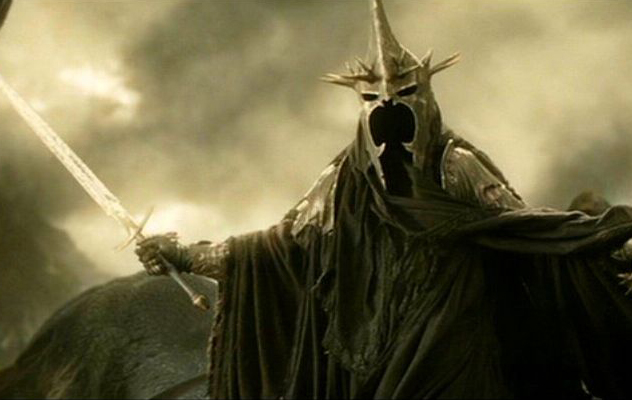
Tom Bombadil is a merry fellow, but many people find his inclusion in the books perplexing, while others find his exclusion from the films rage-inspiring. However, most people would say that Bombadil is without a doubt amoral at the very most, and certainly not evil. He saves the hobbits from Old Man Willow, puts them up in his home, and later saves them from the Barrow Wights as well. The entire time, he sings whimsical ditties and runs around the forest in a bright blue jacket. To imagine this figure as anything but a crazy pacifist living in the forest seems a little unbelievable, but someone did just that.
According to the theory, Tom Bombadil and the Witch-king of Angmar are one and the same. The writer starts out with fairly weak evidence for his theory, simply stating that they are never seen together and that it could work according to the timeline, but he quickly makes more interesting points. In the novels, Bombadil briefly wears the ring, but it has no effect on him whatsoever, and he can see Frodo when the hobbit is wearing it—the author of the theory points out that this is the same way the Witch-king would interact with the ring. He also points to the council of Elrond being unwilling to leave the ring with Bombadil, although the reasons stated at the council are essentially that Tom would simply lose it and not really care about the responsibility they gave him.
If that wasn’t enough, the theorizer also suggests that Tom Bombadil—in his capacity as the Witch-king—actually placed the Barrow Wights where they were, and later removed them to help the hobbits. What isn’t explained satisfactorily by the theory, of course, is why the Witch-king would go to such trouble to be a nice, whimsical guy in his off hours.
9The Ring Represents Original Sin
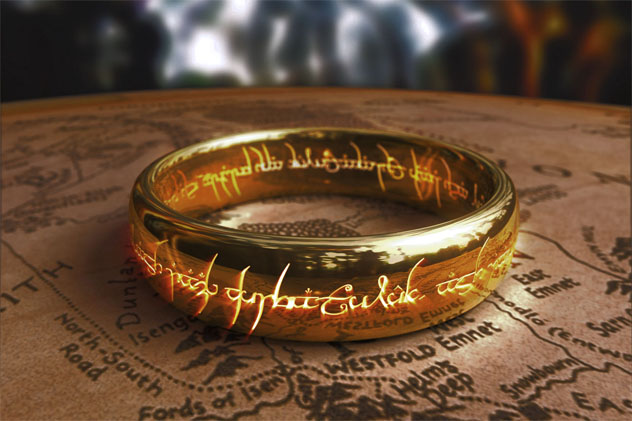
Tolkien was an extremely Catholic man, and so it may be unsurprising that some Catholics have decided to appropriate his work for their own purposes. Despite the fact that Tolkien stated over and over that his work was never intended as an allegory for anything at all, some Catholics have decided that his religion unconsciously influenced him anyway—or they just straight-up claim that Tolkien himself admitted to creating his work as a Catholic allegory, even though there is no truth to it. Some of the arguments include the idea that the ring represents original sin and that Frodo is the Christ figure of the story. The theory also goes way off on the idea of Lembas bread (a special bread made by Elves), and suggests that it was consciously chosen by Tolkien to symbolize the Holy Eucharist.
These theories also posit that Sauron is essentially the Satan figure of Middle-earth, and that Iluvatar is God. It breaks down a little here, because Morgoth (to whom Sauron is only a minion) would be a much stronger candidate for the role of the devil in the Tolkien universe—if there were such a parallel in the first place. While Tolkien was a devoted Catholic, there were no specific efforts on his part to make any specific part of his mythology match with any religious events or places.
8Allegory For World War II
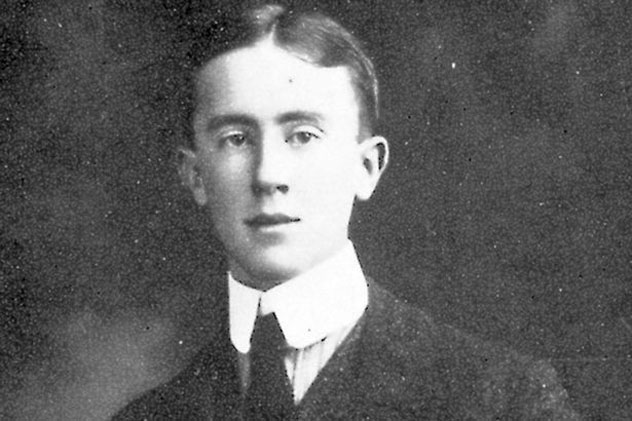
Tolkien was always adamant that his works were not anything besides an open-ended allegory (up to your own interpretation), but that has not stopped legions of people from speculating about what his works meant, and what inspired his epic saga. Many people who know that he fought in World War I like to claim that the series was an allegory for that war, something which he denied. Strangely, even though he was no longer a young man serving in the military, and although the stories were written before much of World War II, many people are convinced that he was writing a fairly direct allegory for that war.
The obvious relation is that Hitler is Sauron, and the Nazis are Orcs, with Saruman, perhaps, fitting as a stand-in for Joseph Stalin—an ally whom the Allies should not have trusted. Ian McKellan himself once stated that he had lived in bomb shelters during World War II, and wondered how such a traumatic war could not have changed the way Tolkien wrote his stories (even if unconsciously).
Of course, whether it was conscious or not is the real point. Tolkien claims that he wrote no direct, conscious allegory for anything, but it is true that everything a writer imagines is based partly on their own experiences. There are likely parts of the books that do indeed fit well with such a theory, but like any allegorical interpretation, it has as much value as you put in it. Tolkien himself understood that people may view it as an allegory and had no problem with that as a general rule—he just really didn’t like it when people claimed that he did it on purpose.
7The Eagles

One of the most common complaints about The Lord of the Rings films is the fact that they didn’t just ride the eagles all the way to Mordor, drop off the one ring, and be on their merry way. There are, of course, some very simple explanations for why they wouldn’t just ride the eagles. For one, it would make for a rather uninteresting story, but more importantly, riding the eagles is hardly a foolproof plan. To begin with, they are described in the novels as being independent creatures who choose when to get involved at all, and so there is no guarantee that they would even be willing. To make things more ridiculous, the eye of Sauron was surely watching the sky, and we see the Nazgul flying winged creatures on more than one occasion. More than likely an aerial advance by the eagles would just be met by Orc arrows and the Nazgul.
However, one recent theory on the Internet took it in an entirely different direction. Without really considering the fact that Sauron and Saruman were watching nearly every approach—and thus would be watching the sky—the theory suggests that Gandalf always intended to use the eagles, but kept getting foiled. His plan was to take the safest, least-watched route to the eagles, and then fly to Mordor. This makes little sense, of course, since if the eagles were really going to help them out, they could have just flown straight to Gandalf and his party. The final part of the theory states that Gandalf’s words, “Fly, you fools,” before leaving to fight the Balrog were suggesting that they use the eagles. This is rather silly, as it’s a pretty common expression and none of the others really had a way to communicate with the eagles anyway.
6Illuminati Conspiracy
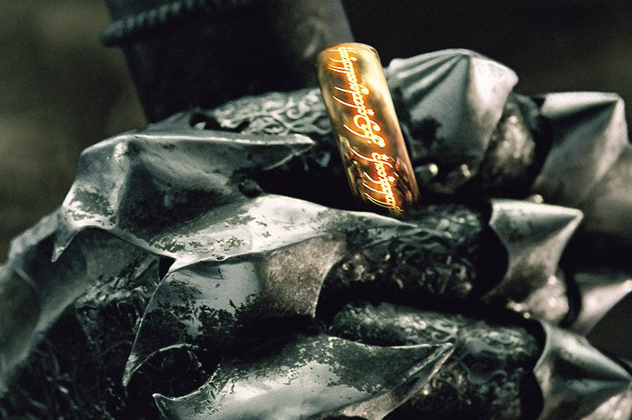
As it stands, Tolkien was an absurdly Catholic individual, and despite his detestation of allegory, the influence of his beliefs is still fairly clear if you look at the lore. However, that hasn’t stopped some theorists from suggesting that Tolkien was actually working for the Illuminati. This theorist isn’t sure whether Tolkien was knowingly working for them or just a pawn, but he lists his “evidence” all the same.
The theorist explains that part of the Illuminati’s modus operandi is to program people whom they use as slaves for their nefarious purposes. According to the theorist, rings are often used as part of this control program, and as such the ring in Tolkien’s novel is clearly a form of programming put in place by our dark overlords. Some of his other evidence includes the fact that Tolkien uses bloodlines in his novel, which, you guessed it, is also supposed to be important to the Illuminati. Of course, this is completely silly, as bloodlines are featured in pretty much every story involving royalty.
5Gandalf Is Iluvatar
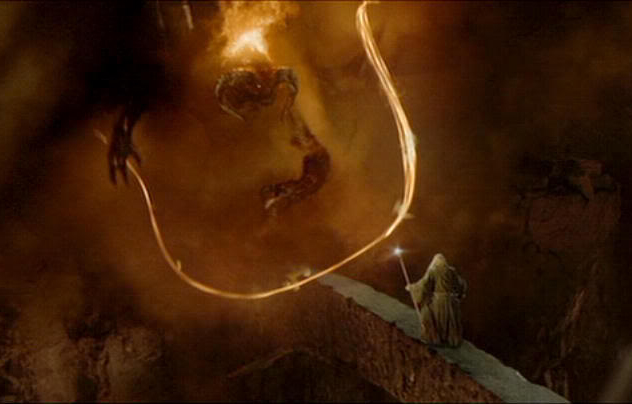
For those who wonder about Tolkien’s religiosity, in his lore, he has a character known as Eru Iluvatar who is the God of Tolkien’s universe. In the mythology, Iluvatar created the universe and all in it, but before long, things started to go wrong. Not everyone wanted to behave properly and follow the laws outlined by the divine creator. One of the first things Iluvatar created were the Ainur, who were sort of like angels. One of these, named Melkor, turned evil and later became known as Morgoth—as outlined in The Silmarillion. Melkor actually corrupted Sauron—who was originally from the same class of being (called Maia) as Gandalf and Saruman—and caused indescribable strife.
When Morgoth was defeated, Sauron remained to cause trouble, and Gandalf (one of the Maia who was sent to deal with Sauron and his allies), began making waves in Middle-earth with his down-to-earth wisdom and incredible spirit. One fan of the series noticed that when Gandalf challenges the Balrog, he says that he wields the “flame of Anor,” which the theorist suggests could be a reference to the Flame Imperishable—a name for the essence which only Iluvatar can give to his creations to give them true life. Since only Iluvatar can hold this flame and the secret is his alone, the theorist suggests that this means Gandalf himself is Iluvatar.
The idea may seem utterly bonkers at first, but, like the God in Christian mythology, Eru Iluvatar didn’t really want to directly jump in and change things all the time. Rather, the creator of Tolkien’s world made things how he needed them to be and intended for things to essentially take their course from there. The theorist suggests that Iluvatar saw the evil of first Morgoth, and then Sauron, and came down in the form of one of the Maia in order to more subtly influence events. While the theory may be far-fetched, it certainly fits with Gandalf’s character. He always manages to show up at the most important times, and he doesn’t fight much in lieu of convincing people with his words.
4Radagast Is More Than He Seems

When Radagast the Brown appeared onscreen in the Hobbit films, there were mixed feelings among the fans. Some of them were very happy to see the wizard appear onscreen, but others felt that, since Radagast doesn’t really have any page time in the books beyond a few casual mentions, there was no way the character could be done accurately. Other people felt that it was okay to still portray him, and even give him some scenes, but that the character himself as directed by Peter Jackson was utterly ridiculous.
Of course, some fans have gone further and theorized that the small mentions of him in the book hint at a much larger role than people realize. Despite being barely mentioned, Radagast is in the same class of being as Saruman and Gandalf, but is known for his ability to transform himself, blend in with trees, talk to animals, and otherwise commune with nature. The writer of the theory notes that Gandalf makes a point of mentioning that Radagast has the ability to use animals as spies to find out what is happening over much of Middle-earth, and as such wonders if it was Radagast who helped Gandalf summon the eagles on so many important occasions.
Furthermore, while Radagast was not known for leaving his usual forest home near Mirkwood, the writer points out that, in The Two Towers, Aragorn and his company are near Fangorn and think they see a wizard lurking nearby. The others think it is Saruman, but Aragorn denies this because the man had a hat instead of a hood and when they ask Gandalf later he denies that it was him. The other possibility is, of course, that the hat-wearing wizard was Radagast keeping a close eye on the proceedings.
3Dumbledore And Grindelwald Are The Blue Istari
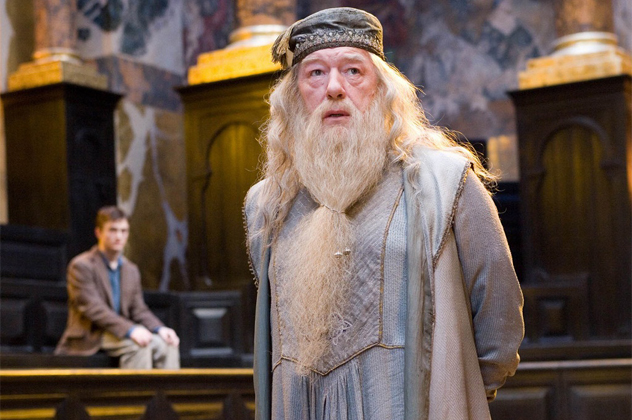
Apart from Gandalf, Saruman, and Radagast, there are two unnamed wizards clad in blue who also enter Middle-earth around the same time. While all of the wizards were sent to help stop Sauron, according to the mythology, the blue ones went into the east and were never heard from again. We have no real evidence in the lore as to whether they actually completed their mission, died, or simply went off to do their own thing against the wishes of Iluvatar (whether for good or ill). This lack of information about two seemingly important characters has led to some strange speculation, but by far the strangest is the theory that they are Dumbledore and Grindelwald.
The theory states that Nurmengard (the prison in the Harry Potter novels that’s used by Grindelwald) is a mix between the names Nuremberg and Isengard and claims that Dumbledore and Grindelwald first dealt with terrible temptation to do whatever was necessary to protect people “for the greater good.” This led them down a dark path against the wishes of Iluvatar and the Valar. The theory states that Dumbledore, once he had defeated Grindelwald and properly prepared people for Voldemort and other future threats, was able to move on—which explains why Dumbledore seemed ready to die and didn’t manage to make any return trips back from the grave.
2The Lord Of the Rings Promotes Witchcraft
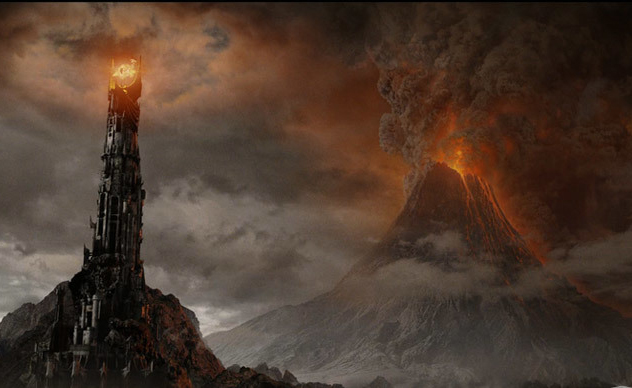
According to an allegedly former witch who is now a Christian, The Lord of the Rings is basically a giant occult plot to give the entire country—perhaps the world—over to the waiting arms of Satan. The theory claims that the release of Tolkien’s work back in the day was a gateway to witchcraft and helped launch the “spiritual revolution.” The author of the theory makes some rather odd claims about Tolkien, stating that he only wrote during the midnight hours and that he finished his book in 13 years, which she states is an important number in occult practices.
It seems likely that this former witch either hasn’t actually practiced witchcraft, or at least has not read Tolkien’s work. She states that she performed astrology, palmistry, and numerology, which are three things that never appear in any of the novels. After a diatribe against Christian organizations that defend certain “occult” books like Harry Potter and LOTR, she goes completely off the rails. She explains that The Lord of the Rings promotes witchcraft, because when you become a witch you are taught that there are good and evil forces, and that good always triumphs. The author of the theory then declares in a rather triumphant tone that since there is good and evil in LOTR (with good always succeeding in the end), then it must be promoting witchcraft.
1The Death Of The Witch-King
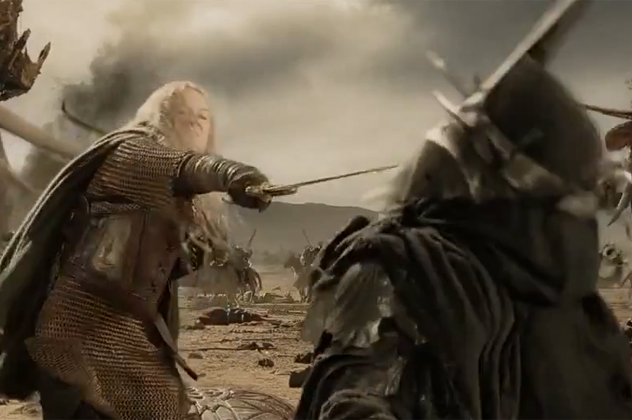
Some people have taken note of the scene at the end of The Return of the King where Eowyn and Merry are fighting the Witch-king of Angmar. Merry stabs the Witch-king, and then Eowyn finishes him off. Before she takes him down, he states that no man can kill him and she dramatically reveals that she is not actually a man, but a woman, and thus capable of killing him. However, some people have argued that it was not necessarily Eowyn, but possibly Merry the hobbit who delivered the important blow.
For some people, it comes down to a very specific bit of wording: No man can kill him. Some have taken this to mean that it should include the race of men as a whole, and that thus only the stroke of someone not of the human race could actually untether him from his connection to Middle-earth. Some people have also noted that Merry’s blade was made by the men of Westernesse, who made it specially for fighting the kind of creature Merry was up against. However, Merry only struck one of the first two blows against the Witch-king, and Eowyn’s appears very plainly in the text to be the final and most important one. Also, considering how specific Tolkien was about most of his mythology, if he had meant that a non-human was necessary, he likely would have said so.
